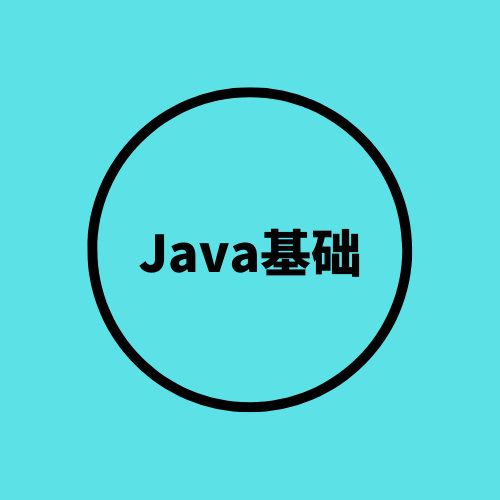Java 重点 | IO 流中的文件专属流
- 2022-11-19 安徽
本文字数:5199 字
阅读完需:约 17 分钟

文件专属
FileInputstream(读 字节)
java.io.FileInputStream:1、文件字节输入流,万能的,任何类型的文件都可以采用这个流来读。2、字节的方式,完成输入的操作,完成读的操作(硬盘--->内存)
Read()方法:读取内容,返回值是读到几个数量,就返回几,当读完的时候,返回-1,就代表没有了
public class FileInputStream读 { public static void main(String[] args) throws IOException { FileInputStream fis = null; try { //创建文件字节流输入对象 fis = new FileInputStream("D:\\AJava\\新建文件夹\\aaa"); /* while (true){ int rea = fis.read(); //read():读文件 if (rea == -1 ){ break; } System.out.println(rea); }*/ //改造while int aaa = 0; while ((aaa= fis.read())!=-1){ System.out.println(aaa); }
} catch (FileNotFoundException e) { e.printStackTrace(); }finally { //关闭流的前提是流不是空,流是空没有必要关 if (fis != null) { fis.close(); } }
}}
分析以上程序的缺点:一次读取一个字节 byte,这样内存和硬盘交互太频繁,基本上时间/资源都耗费在交互上面了。能不能一次读取多个字节呢?可以。
public class FileInputStream读最终版 { public static void main(String[] args) { FileInputStream fil = null; try { //创建文件字节输入流 fil = new FileInputStream("JAVAse进阶/src/IO流/aa"); //开始读,采用byte数组,一次读取多个字节。最多读取“数组.length”个字节 byte[] bytes= new byte[4];//准备一个4个长度的byte数组,一次最多读取4个字节/* while (true){ int rea = fil.read(bytes); if (rea==-1){ break; } System.out.print(new String(bytes,0,rea)); }*/ int aaa=0; //提前准备一个变量 while ((aaa=fil.read(bytes))!=-1){ //使用String构造方法,将byte转换为字符串,从0开始,到aaa结束,转换这么多 //aaa返回的是读取字节数量。 System.out.print(new String(bytes,0, aaa)); } } catch (FileNotFoundException e) { e.printStackTrace(); } catch (IOException e) { e.printStackTrace(); } finally { if (fil != null) { try { fil.close(); } catch (IOException e) { e.printStackTrace(); } } } }}
FileInputStream 类的其他常用方法
FileInputstream 类的其它常用方法:
int available():返回流当中剩余的没有读到的字节数量Long skip(long n):跳过几个字节不读。
public class FileInputStream类的其他常用方法 { public static void main(String[] args) { FileInputStream fil = null; try { fil = new FileInputStream("JAVAse进阶/src/IO流/aa"); System.out.println(fil.available()); //准备一个长度为fil.available长度的数组,一次最多读fil.available()个字节 byte[] bytes = new byte[fil.available()];// 这种方式不太适合太大文件,因为byte数组不能太大 //不需要循环了,直接读一次就行了,返回的是一次读到的字节 int read = fil.read(bytes); //读取到的字节转换为字符串输出 System.out.println(new String(bytes)); } catch (FileNotFoundException e) { e.printStackTrace(); } catch (IOException e) { e.printStackTrace(); } finally { if (fil != null) { try { fil.close(); } catch (IOException e) { e.printStackTrace(); } } } }}
FileOutputStream (写 字节)
文件字节输出流,负责写。从内存到硬盘。
public class FileOutputStream写 { public static void main(String[] args) { FileOutputStream fos=null; try { //如果没有这个文件,会自动创建一个 //这种构造方法会将原文件清空,然后重新写入 //fos = new FileOutputStream("JAVAse进阶/src/IO流/aa");
//这个构造方法,以追加的方式在文件末尾写入,不会清空原文件内容。 fos = new FileOutputStream("JAVAse进阶/src/IO流/aa",true); //开始写 byte[] bytes = {97,98,99,100}; //将byte全部写出 fos.write(bytes); //将byte数组一部分写出 从下标0开始,取2个 fos.write(bytes,0,2); //字符串 String s = "我是一个中国人"; //将字符串转换成byte数组。 byte[] bytes1 = s.getBytes(StandardCharsets.UTF_8); //写 fos.write(bytes1); //写完之后一定要刷新 fos.flush(); } catch (FileNotFoundException e) { e.printStackTrace(); } catch (IOException e) { e.printStackTrace(); } finally { if (args != null) { try { fos.close(); } catch (IOException e) { e.printStackTrace(); } } } }}
运行后文件末尾会多出:abcdab 我是一个中国人
文件复制
使用 FileInputStream+FileOutputStream 完成文件的拷贝。拷贝的过程应该是一边读,一边写。使用以上的字节流拷贝文件的时候,文件类型随意,万能的。什么样的文件都能拷贝。
public class 文件复制 { public static void main(String[] args) { FileInputStream fis = null; FileOutputStream fos = null; try { //创建一个输入流对象 fis= new FileInputStream("D:\\a剪辑\\完成视频\\123.mp4"); //创建一个输出流对象 fos = new FileOutputStream("D:\\123.mp4");
//最核心 一边写 一边读 byte[] bytes =new byte[1024*1024]; //1MB(一次最多拷贝1MB) int aa = 0; while ((aa= fis.read(bytes))!=-1){ //Fis.Read(bytes) :往bytes数组中读 fos.write(bytes,0,aa); // 然后从数组拿出来 一次写aa个,aa是写入数组的数量 }
//刷新 输出流最后要刷新 fos.flush(); } catch (FileNotFoundException e) { e.printStackTrace(); } catch (IOException e) { e.printStackTrace(); } finally { if (fos == null) { // 分开try,不要一起try // 一起try的时候,其中一个异常,可能会影响另外一个流的关闭。 try { fis.close(); } catch (IOException e) { e.printStackTrace(); } try { fos.close(); } catch (IOException e) { e.printStackTrace(); } } }
}}
FileReader(读 字符)
FileReader :文件字符输入流。只能读取普通文本。读取文本内容时,比较方便,快捷。
FileReader 和上面 FileInputStream(读 字节)的使用方法一样,直接照葫芦画瓢
public class FileReader读 { public static void main(String[] args) { FileReader fileReader = null; try { //创建文件字符输入流 fileReader = new FileReader("JAVAse进阶/src/IO流/aa"); //开始读 char [] chars = new char[4]; //一次读四个字符 int red = 0; while ((red = fileReader.read(chars))!=-1){ //使用String构造方法,将char转换为字符串,从0开始,到red结束,转换这么多 //red返回的是读取字符数量。 System.out.print(new String(chars,0,red)); } } catch (FileNotFoundException e) { e.printStackTrace(); } catch (IOException e) { e.printStackTrace(); } finally { if (fileReader != null) { try { fileReader.close(); } catch (IOException e) { e.printStackTrace(); } } } }}
FileWriter (写 字符)
FileWriter: 文件字符输出流,只能输出普通文本。
public class FileWriter写 { public static void main(String[] args) { FileWriter fileWriter = null; try { //创建文件字符流对象 清空原文内容在写入 //fileWriter = new FileWriter("JAVAse进阶/src/IO流/aa"); //加个ture 表示不清空原文内容,从后面追加 fileWriter = new FileWriter("JAVAse进阶/src/IO流/aa",true); //创建一个char数组 char[] chars = {'我','是','中','国','人'}; //全部写出 fileWriter.write(chars); //部分写出,下标从2开始,取三个 fileWriter.write(chars,2,3); //直接传入一个String也是可以的 fileWriter.write("我是中国人");
//换行符 fileWriter.write("\n"); fileWriter.write("励志当一个程序员");
//刷新 写出都要刷新 fileWriter.flush();
} catch (IOException e) { e.printStackTrace(); }finally { if (fileWriter != null) { try { fileWriter.close(); } catch (IOException e) { e.printStackTrace(); } } }
}}
复制普通文本文件
使用 FileReader, FileWriter 进行拷贝的话,只能拷贝“普通文本”文件。
public class 复制普通文本文件 { public static void main(String[] args) { FileReader du = null; FileWriter xie = null; try { //读 du = new FileReader("JAVAse进阶/src/IO流/aa"); //写 xie = new FileWriter("aa"); //一边读一边写 char [] chars = new char[1024*512]; int aa = 0; //du.read(chars) 往chars数组中读 while ((aa =du.read(chars) )!=-1){ //读多少写多少 xie.write(chars,0,aa); } //刷新 xie.flush(); } catch (FileNotFoundException e) { e.printStackTrace(); } catch (IOException e) { e.printStackTrace(); }finally { if (xie != null) { try { xie.close(); } catch (IOException e) { e.printStackTrace(); } } if (du != null) { try { du.close(); } catch (IOException e) { e.printStackTrace(); } } }
}}
版权声明: 本文为 InfoQ 作者【几分醉意.】的原创文章。
原文链接:【http://xie.infoq.cn/article/a57d869f80852f40a743d4d9a】。文章转载请联系作者。
几分醉意.
还未添加个人签名 2022-10-22 加入
还未添加个人简介










评论